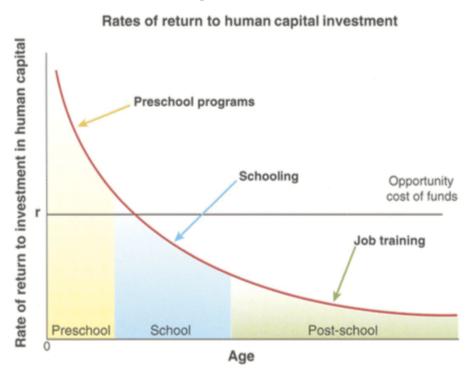Fact Base Question:
The No Child Left Behind Act of 2001 was a U.S. Act of Congress that reauthorized the Elementary and Secondary Education Act; it included Title I provisions applying to disadvantaged students. Which president signed the No Child Left Behind Act (NCLB) into law?
President George W. Bush
True or False
How does parenting behaviors impact child development (ex. Language and math skills)?
Increasing children’s exposure to language (more words and more complex syntax) is effective at increasing children’s vocabulary and language comprehension. Also, a variety of verbal and nonverbal aspects of caregiver-child interactions have been highlighted as predictors of children’s developing numerical and spatial thinking.
True
Such adult social ills can be accurately predicted from as early as which age (using a small set of indicators of disadvantage)?
A. 3
B. 5
C. 7
D. 10
A. 3
For the Parents and Children Making Connections – Highlighting Attention (PCMC-A) intervention, how much does it cost per child?
A. $1000
B. $1500
C. $1800
D. $800
D. $800

This figure implies that, at current levels of funding, we underinvest in most schooling and post-schooling programs and overinvest in preschool programs for disadvantaged persons.
True or False
False
Instead of just telling parents to “try counting with your child!”, how can we provide more specific structured plans that are better tailored to their own opportunities and routines?
Possible Answer: "If we are having Cheerios for breakfast, then we will count the first 10!”
Give 2 examples of lifetime problem behaviors that can be predicted by childhood adversity.
Health, crime, education, earnings, and social engagement
What percent of classrooms scored low than “good quality” in the States?
A. 30%
B. 50%
C. 60%
D. 85%
D. 85%
Multiple Choices:
What percentage of the U.S workforce is functionally illiterate?
10%
20%
26%
32%
20%
All school-level factors (teacher, classroom, and school attributes) account for only about _____ % of student achievement, whereas individual demographics and family background account for ______ % of the variation.
A. 12% 36%
B. 15% 35%
C. 30% 50%
D. 20% 60%
D. 20% 60%
What is the overall benefit/cost ratio of the HighScope/Perry Preschool Program targeted disadvantaged 3-4 year-old children?
A. 2 to 1
B. 5 to 1
C. 7 to 1
D. 10 to 1
C. 7 to 1
Give 1 example of early childhood risk measures
Familial socioeconomic characteristics, maltreatment, IQ, and self-control
What percentage of Germany and Sweden workforce is functionally illiterate?
A.10%
B. 26%
C. 34%
D. 48%
A.10%
What are four important factors in interventions on caregiver-child interaction?
A. awareness, efficacy, planning, and feedback
B. awareness, motivation, planning, and feedback
C. motivation, efficacy, planning, and feedback
D. awareness, efficacy, planning, and motivation
awareness, efficacy, planning, and feedback
What is the rate of return (the rate which a dollar investment increases in value each year after the program is implemented) of the Carolina Abecedarian Project (to study the potential benefits of early childhood education for poor children to enhance school readiness & started at age eight weeks and lasted until age five)?
A. 5%
B. 12%
C. 19%
D. 24%
B. 12%
Which university is James J. Heckman currently teaching right now?
University of Chicago
James Joseph Heckman is a Nobel Prize-winning American economist who is currently at the University of Chicago, where he is The Henry Schultz Distinguished Service Professor in Economics and the College